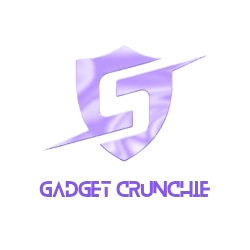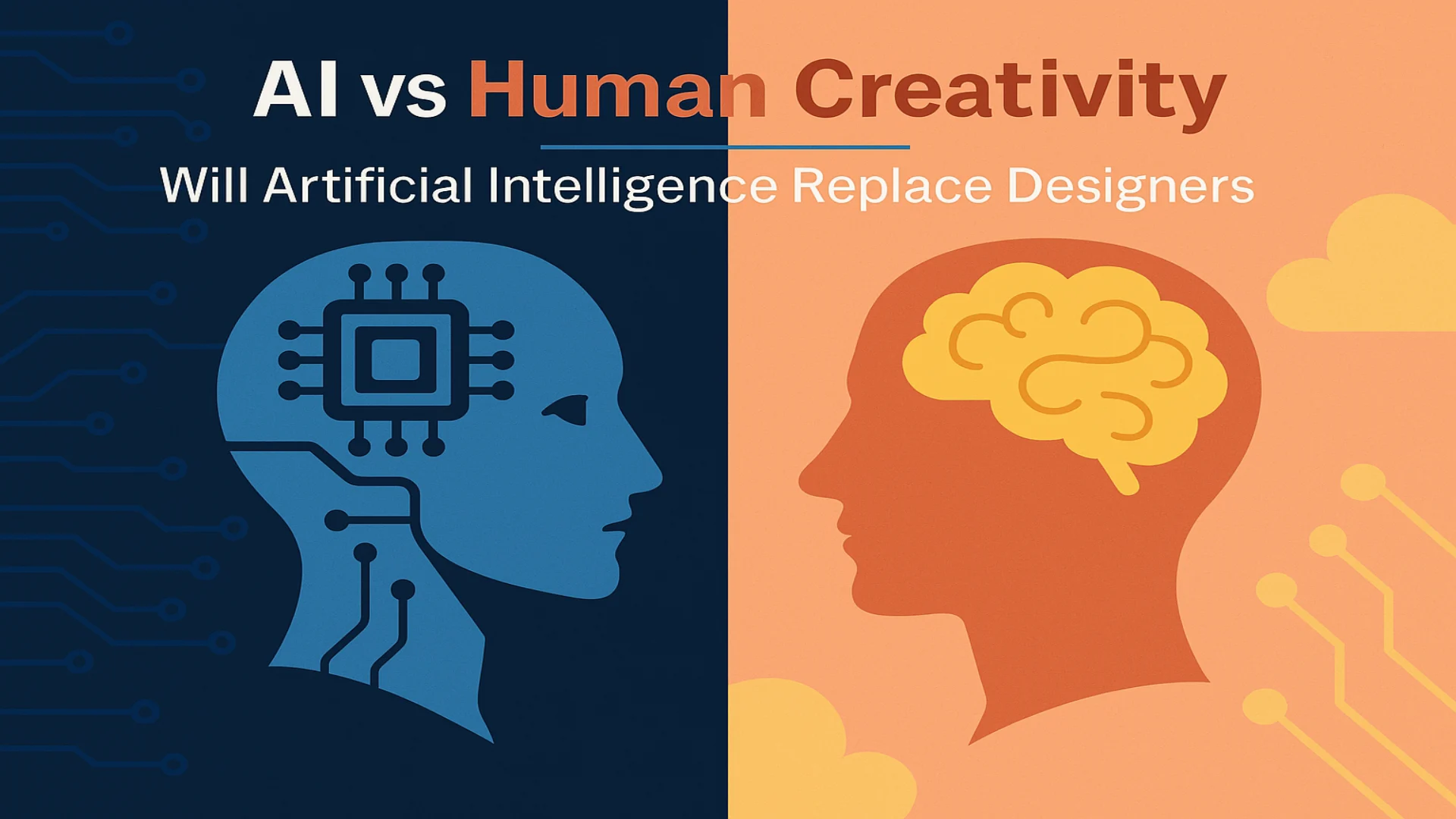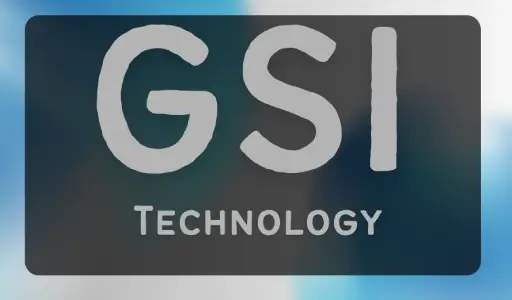AI vs Human Creativity — Will Artificial Intelligence Replace Designers?
Meta Description: Can AI truly replace human designers? We explore how artificial intelligence is transforming graphic design, web development, and creative careers—and what it means for the future.
Focus Keyword: AI vs Human Creativity
Introduction
The creative world is undergoing a seismic shift. AI tools like MidJourney, DALL·E 3, Adobe Firefly, and ChatGPT can now generate stunning visuals, logos, and even entire website designs in seconds. This has sparked a crucial debate:
Will AI replace human designers, or will it become their most powerful collaborator?

In this in-depth exploration, we’ll analyze:
✔ 7 ways AI is already transforming design workflows
✔ 5 critical areas where humans still dominate
✔ Emerging hybrid creative models
✔ Which design jobs are most at risk
✔ How top designers are adapting
✔ Ethical considerations in AI-assisted design
✔ Future predictions for the creative industry
1. The AI Design Revolution: 7 Ways Tools Are Changing the Game
1.1 Instant Visual Generation
- Platforms like MidJourney and Stable Diffusion can create high-quality images from text prompts
- Example: A restaurant owner can generate 50 menu design concepts in minutes
1.2 Automated Web Design
- Tools like Figma AI, Wix ADI, and Bookmark build complete website layouts automatically
- Impact: What took days now takes hours
1.3 Dynamic Branding Systems
- AI-powered platforms like Looka and Brandmark generate complete brand identities
- They produce:
- Logo variations
- Color palettes
- Typography systems
- Business card designs
1.4 Intelligent Photo Editing
- Adobe Photoshop’s Generative Fill can:
- Remove objects flawlessly
- Stretch visuals beyond their boundaries
- Swap backgrounds instantly with single-click functionality
1.5 Data-Driven Design Optimization
- AI-driven analytics evaluate user interactions to recommend:
- Better button placements
- Higher-converting color palettes
- Higher-converting layouts
1.6 Rapid Prototyping
- Tools like Uizard transform hand-drawn sketches into digital prototypes instantly
1.7 Personalized Design at Scale
- AI can create thousands of unique ad variations tailored to different audiences
2. 5 Areas Where Human Designers Still Reign Supreme
2.1 Emotional Intelligence & Empathy
- Humans understand:
- Cultural nuances
- Subtle emotional cues
- The “strategic” brand tonality
- Example: A human designer would know when a playful vs. serious tone is appropriate
2.2 Strategic Creative Direction
- AI lacks ability to:
- Align designs with long-term business goals
- Develop integrated brand storytelling approaches
- Anticipate market trends
2.3 True Originality & Innovation
- While AI combines existing ideas, humans can:
- Create innovative design vocabularies
- Push creative boundaries
- Make conceptual leaps
2.4 Complex Problem Solving
- Humans excel at:
- Balancing multiple constraints
- Formulating refined approaches to exceptional circumstances
- Understanding client psychology
2.5 Ethical Judgment & Responsibility
- Only humans can:
- Navigate copyright issues
- Make moral decisions about representation
- Ensure designs don’t perpetuate harmful stereotypes
3. The Hybrid Future: Emerging Collaboration Models
3.1 The AI Assistant Model
- Designers use AI for:
- First drafts
- Tedious tasks
- Rapid iteration
- Then apply human judgment to refine
3.2 The Creative Director Approach
- Humans provide:
- Creative briefs
- Art direction
- Strategic guidance
- AI executes the production work
3.3 Real-Time Co-Creation
- New tools like Adobe’s Co-Creator allow:
- Simultaneous human-AI design
- Instant style transfers
- Dynamic adjustments
3.4 AI-Powered Skill Augmentation
- Allows junior designers to:
- Produce senior-level work
- Expand their capabilities
- Target to meta-perspective imagination
4. Job Market Impact: Most & Least Vulnerable Roles
High Risk Positions
▸ Basic graphic production
▸ Stock image customization
▸ Simple social media templates
▸ Entry-level web design
▸ Basic photo retouching
Secure Creative Careers
▸ Creative directors
▸ UX/UI strategists
▸ Brand identity specialists
▸ Design thinkers
▸ Art directors
5. How Top Designers Are Adapting
5.1 Mastering Prompt Engineering
- Learning to communicate effectively with AI tools
- Developing specialized prompt libraries
5.2 Focusing on Strategy Over Execution
- Shifting from production to:
- Creative direction
- Client consulting
- Big-picture thinking
5.3 Developing “AI Whisperer” Skills
- Knowing:
- Which mediums to use when
- How to merge various AIs
- When human touch is essential
5.4 Specializing in Niche Areas
- Developing expertise in:
- Industries AI struggles with
- Highly conceptual work
- Emotionally complex projects
6. Ethical Considerations in AI Design
6.1 Copyright & Originality
- Who owns AI-generated designs?
- How to avoid unintentional plagiarism
6.2 Job Displacement Concerns
- How to responsibly integrate AI without eliminating entry-level positions
6.3 Representation & Bias
- Ensuring AI tools don’t perpetuate stereotypes
- Maintaining diverse perspectives in design
7. Future Predictions: 2025 and Beyond
7.1 The Rise of the “Creative Technologist”
- Hybrid roles combining:
- Design sensibility
- AI expertise
- Technical skills
7.2 Personalized Design Ecosystems
- AI systems that learn individual:
- Creative styles
- Workflow preferences
- Client needs
7.3 New Forms of Creative Expression
- Emergence of:
- AI-human interactive art forms
- Dynamic, evolving designs
- Interactive brand experiences
Conclusion: The Future Belongs to Augmented Creatives
The most successful designers of tomorrow won’t be those who:
❌ Fear and resist AI
❌ Try to compete directly with machines
But rather those who:
✅ Embrace AI as a powerful tool
✅ Focus on irreplaceable human strengths
✅ Continuously adapt their skills
The winning formula?
Human creativity + AI capabilities = Unlimited potential
FAQs
Where do you stand on AI in design?
Join the conversation in the comments below! 👇




